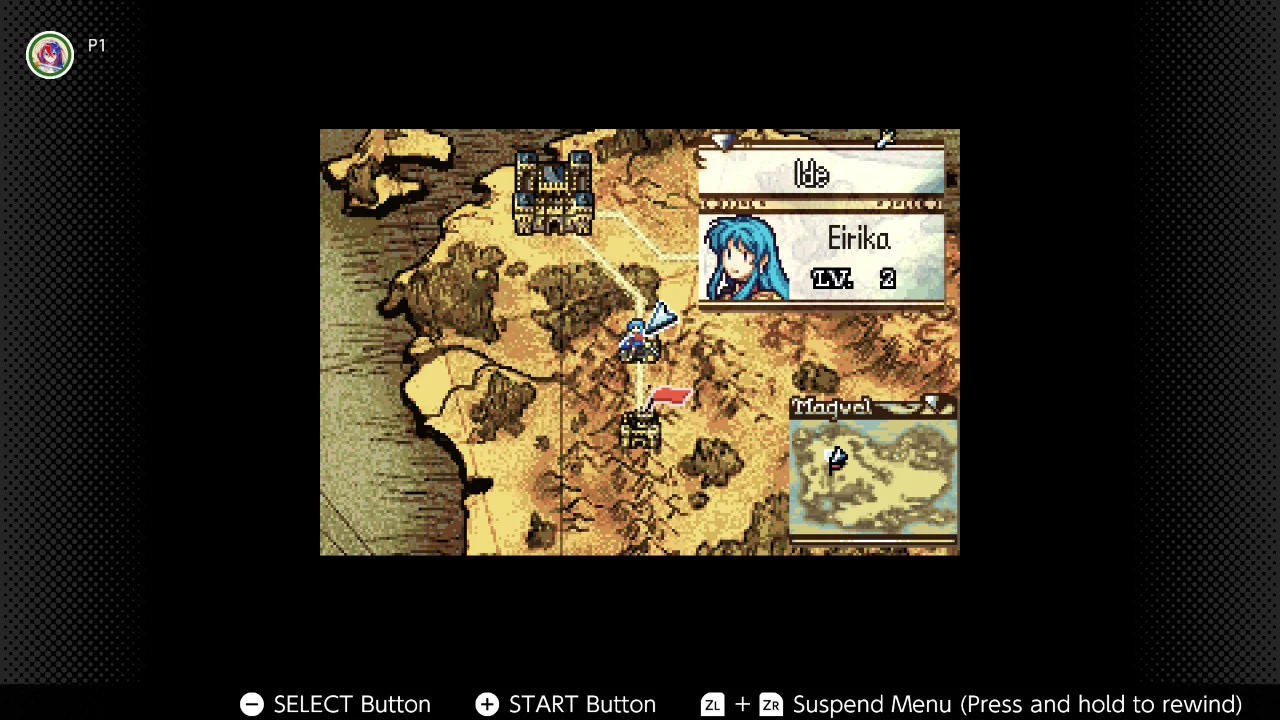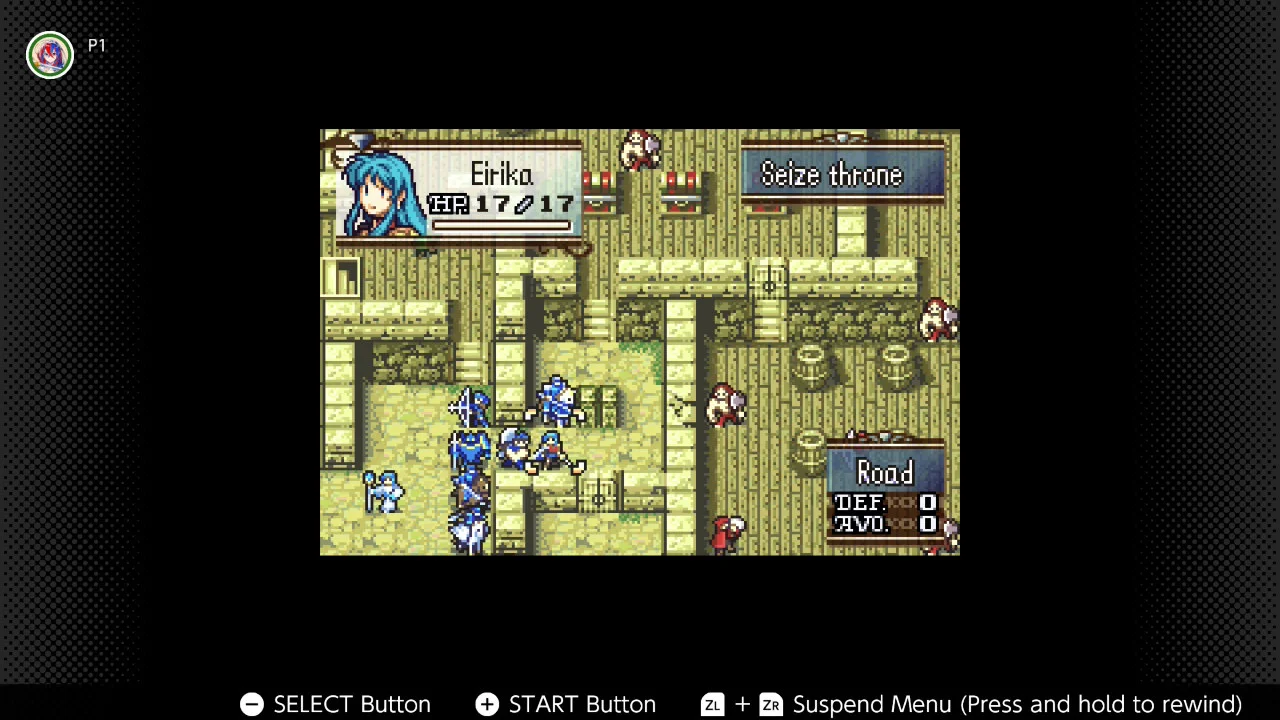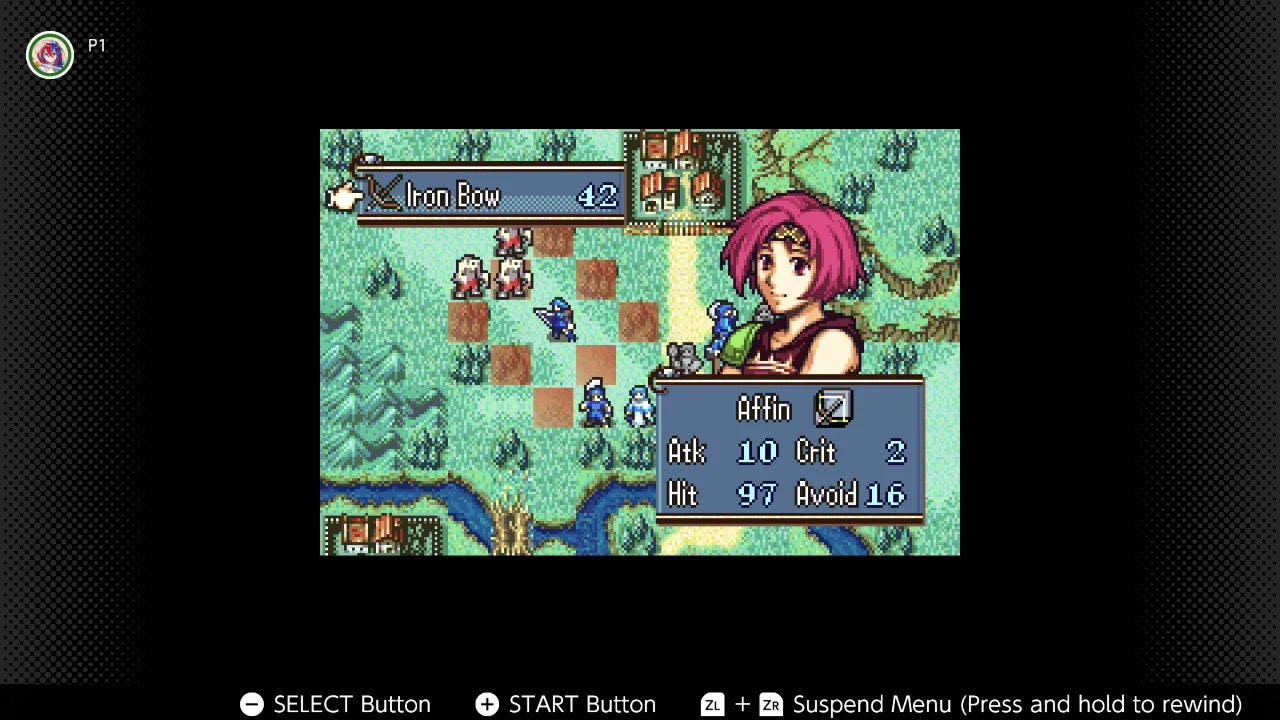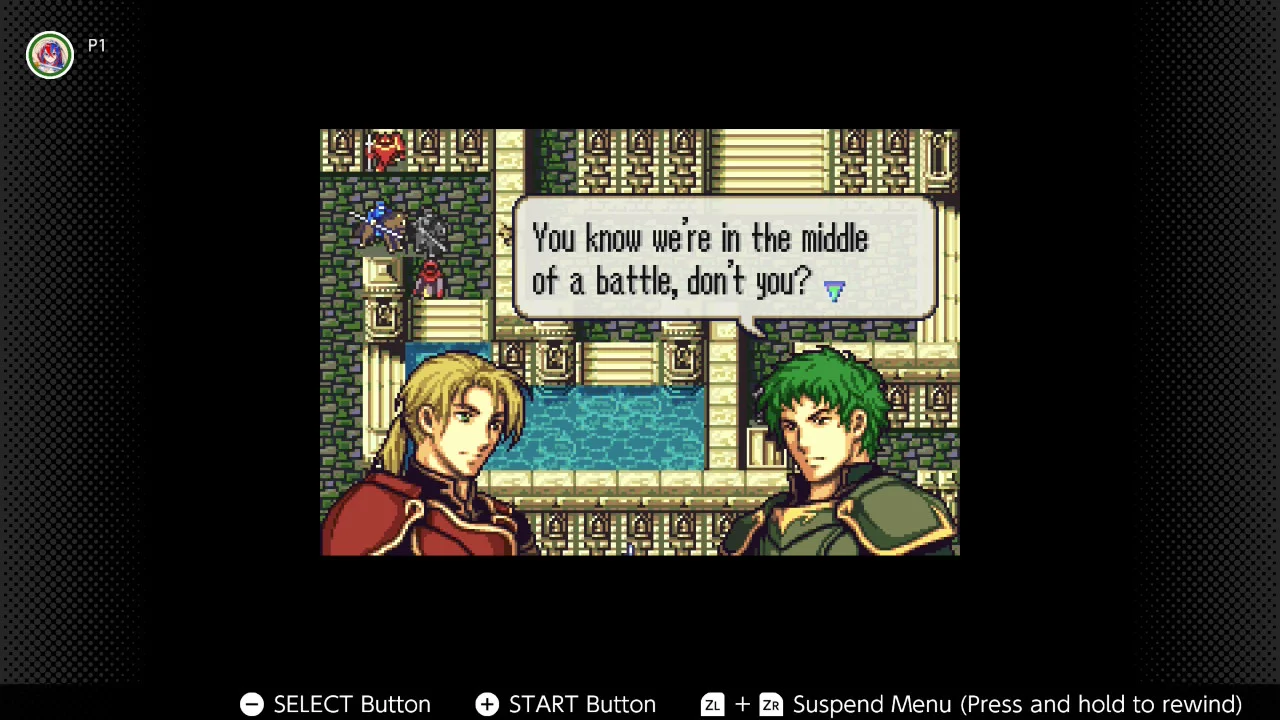I’m something of a newcomer to Fire Emblem, having heard of Nintendo’s flagship SRPG series but only discovering its tactical intricacies for myself with Fire Emblem Awakening on the Nintendo 3DS. Since then, I’ve been enamored with the franchise’s more recent titles, but hesitant to try out its earlier iterations. Yet I remained steadfastly curious all the same. Finally, I decided to put a recently acquired Nintendo Switch Online Expansion Pass through its paces with a playthrough of the Game Boy Advance title Fire Emblem: The Sacred Stones. Upon doing so, I found a surprisingly robust SRPG experience with a moderate degree of replayability that leans towards being newcomer-friendly. The Sacred Stones seems to be a divisive title due to its potential ease depending on your playstyle. Still, it can also potentially serve as a stepping stone for us latecomer FE fans who are curious about earlier entries in the series.
Fire Emblem: The Sacred Stones takes place in a fantasy realm where various kingdoms live together in relative peace after sealing away an evil Demon King through the power of the fabled Sacred Stones many years prior. This harmonious existence abruptly ends when the hostile empire of Grado invades the neighboring kingdom of Renais. Ephraim and Eirika, Renais’ twin prince and princess, must reach out to their allied kingdoms in the hope of one day reclaiming their homeland, Renais, and to prevent Grado’s nefarious plans of destroying the land’s Sacred Stones. Can the twins and their companions succeed with the odds stacked against them, all while a dear childhood friend leads the very empire they need to defeat?
There isn’t much else to say about the plot of Fire Emblem: The Sacred Stones—if you’ve played a lot of fantasy JRPGs or watched/read a lot of fantasy anime and manga series, you’ll discover familiar story beats and tropes. While not the most original fantasy tale, the story isn’t bad by any means, as it carries the game’s momentum and serves as the driving force for the battles you face. I’d argue The Sacred Stones has a better overall narrative to it than even some of the later FE games. The plot’s standout factor is easily the colorful and interesting characters that make up the units in your army. Eirika and Ephraim are likable, heroic figures to rally behind, with distinct personalities. At the same time, allied princess L’Arachel is an exuberant character who steals every scene she’s in without feeling too overbearing, and characters like Grado’s Knoll and Cormag showcase unique perspectives on the narrative conflict. I greatly enjoyed figuring out how to recruit everyone I could, given how detailed their backstories and personalities are. There were a few typos and grammatical errors at times regarding the script’s localization, but nothing too horrendous that it took away from the plot.
But let’s get to gameplay, shall we? After all, at the heart of every good FE game is a solid SRPG that should have you planning your tactics in each round of battle carefully if you want not only to succeed but also survive. Fire Emblem: The Sacred Stones provides well-thought-out battle maps and offers polished strategic turn-based combat, but there’s a caveat that could make the game seem too easy for some FE fans.
Namely, two ruins open up in-game on the world map. These ruins supply you with optional battle maps you can return to as often as you like throughout a playthrough, and you can even get into random battles in some locales on the map, too. These provide you with easy means to level up units outside of regular use in story battles, beefing up their stats to ensure higher survivability in the regular story fights. Now, you always have the option not to grind if you want more of a challenge playing through the main story, since these battles aren’t mandatory. I only really fought in them myself because I wanted to have all of my character units reach an A Support (with that pesky completionist side of me rearing its ugly head again). Still, even that little bit of level-grinding was enough to get my units unintentionally overpowered for the final fight.
In battles, you move your units across a gridded map while the AI does the same for enemy units. When opposing units come into contact or within range with one another, a “fight” plays out should one side choose to attack. Depending on weapon type and range, damage can be taken by one side or both. Arrows and magic can often strike some distance away, while melee weapons like swords or axes usually have to be in close contact. A weapon trinity and a magic trinity exist around the various types of weaponry and spells at your disposal, too. Certain weapon types, for instance, hit harder against one type while being weaker to another in a muted sort of rock-paper-scissors fashion. Hence, players need to keep in mind the best weapons to attack a particularly equipped enemy with. Flying units can cover more terrain when they move, but are also more vulnerable to archers and projectiles, so having them move too far ahead and get surrounded isn’t very sound tactically. Likewise, offensive magic users can strike from farther away and are especially potent against heavily armored units, but are inherently squishy when it comes to being on the wrong end of a sharp weapon. Healers are a boon on the battlefield, but need careful positioning for defense purposes. Because permadeath is a possibility, especially in the earlier stages and if you opt not to participate in level-grinding, you have to carefully consider where to best place units if you want them to survive a fight.
Resource management also plays a significant factor in battles, as your funds are limited, and most items, including weapons and those used for healing, have a finite number of uses. Cheaper but often less powerful weapons have more uses in combat, but aren’t as potent. You also have to raise a unit’s weapon rank for them to use the more powerful gear for their job class. Trying to use the optional leveling battle maps to keep all your characters evenly matched can be a resource drain, especially since the most potent and high-ranking weaponry at your disposal has limited usage. Take the unique unit Myrrh, for example. Her only weapon is the finite Dragonstone, and she can’t change job classes once the Dragonstone depletes. I kept her in the party until she reached an A Support, then put her in reserves to conserve her weapon usage until the final boss battles. I didn’t equip any of the “sacred twin” relic weapons onto characters until that point either, as I didn’t want to waste their uses on small fry. Ironically, it only took an attack from Myrrh and three strikes of the relic weapons to take down the two forms of the final boss, but I think that just proves how overpowered you can make your units. There’s also a limited number of items to raise character job classes to their more advanced versions, so you have to carefully pick and choose who to devote those resources to. Poor Tana remained a Level 20 Pegasus Knight for my entire story run because I found it more beneficial to use the aerial unit advancement seals on two other characters at the time. All of these factors need careful consideration, adding to the game’s strategy component.
Similar to resource management, the support feature in later FE games is also a bit different here. Each unit only has an allotment of five support points, so you can only raise a unit’s support level to their highest of A with just one character from their limited list of choices. Doing so not only presents you with interesting insights into the characters in question, thanks to the dialogues that unlock, but also grants stat bonuses to each character when they stand adjacent to one another on a battlefield that increase with every support level earned. It’s a helpful feature that can alter character endings somewhat and can also factor into strategic considerations. However, I did find it odd that support conversations take up a character’s turn on a battle map.
Fire Emblem: The Sacred Stones has colorful, eye-catching pixel graphics. Playing the game on the Nintendo Switch Online feature allows you to choose between a larger screen ratio or a smaller screen to capture better the more “classic” feel of a smaller GBA screen. I played the game on a docked console, so I preferred the look of the smaller screen myself, though I could imagine the larger screen ratio might look better on a Switch in handheld mode. Music-wise, I enjoyed the soundtrack and felt it fit the game’s ambiance rather well. I also like that you can listen to unlocked music tracks in the Extra game menu.
After playing through the game once, you unlock further extras, the most prolific of which is undoubtedly Creature Campaign, as it lets you revisit the game map once more after seeing the epilogue to play through various battles and earn lucrative awards. I’m pretty impressed by the replayability of The Sacred Stones, not only thanks to its post-game content but also simply because of the possible permutations to the script that can happen depending on who lives, dies, or is even recruited to begin with, or who you have develop support bonds, or whether you chose to play as Eirika or Ephraim at certain branching points in the game. You can spend time just experimenting with things throughout a playthrough, which is even further encouraged while playing using Nintendo Switch Online because you can create separate suspend data save points at the beginning or middle of fights, allowing you to dive right back into the game instead of having to restart a chapter should you need to leave suddenly.
Fire Emblem: The Sacred Stones is an interesting FE game in that I can see why, out of earlier entries in the series, it is divisive. On one hand, you can very much make the argument that it can become too easy depending on how you play it. On the other hand, that selfsame “easiness” might make it a less intimidating starting point for curious newcomers to the older FE titles, easing them into the gameplay mechanics so that they feasibly branch out into other FE games. From that stance, I don’t think The Sacred Stones is a bad game. It’s an entertaining SRPG in its own right, one that I can safely say I enjoyed playing and that’s made me want to try my hand at more FE games down the road. In that regard, I’d say I successfully met my battle objective for playing Fire Emblem: The Sacred Stones.






